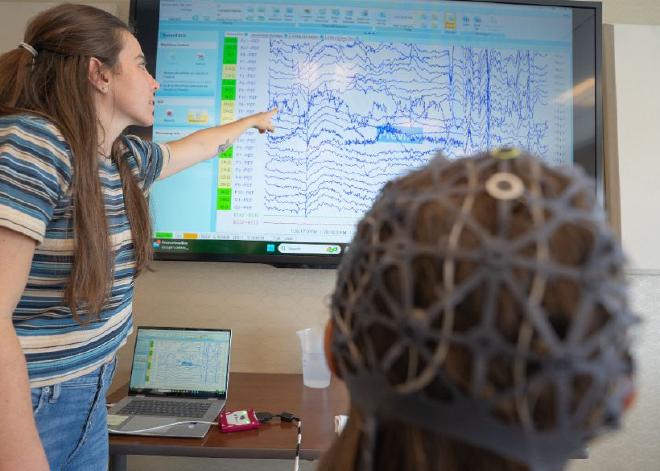

Lise Worthen-Chaudhari, PhD a scientist with The Ohio State University Comprehensive Cancer Center – Arthur G. James Cancer Hospital** and **Richard J. Solove Research Institute (OSUCCC – James) and The Ohio State University College of Medicine Department of Physical Medicine and Rehabilitation, is leading the study, which explores how dance and music help the body “relearn” to feel sensation and overcome nerve damage. This approach combines the fun of adapted Argentine tango with scientific techniques to help survivors regain their balance, gait and foot/hand sensation.


“In essence, this work is about helping survivors reclaim their lives and thrive, rather than just survive. It’s about providing them with a fun and effective way to improve their sensory motor skills and reduce the fear of falling, ultimately enhancing their overall well-being,” said Worthen-Chaudhari.
Importance of ‘dual-task’ functioning #
In 2024, Worthen-Chaudhari and colleagues reported study pilot data showing that, among survivors of breast cancer with neuropathy, small doses of social dance improved dual-task function compared to larger doses of home exercise, possibly due to differences in cognitive engagement.

Through an expanded five-year study, Worthen-Chaudhari and her colleagues expect to recruit 140 breast cancer survivors treated at the OSUCCC – James and Yale University. The study will focus on measuring dual task performance, which is the ability to move and think at the same time. This is important for daily activities like walking and interacting with loved ones. The research aims to see if the benefits of tango therapy can be sustained over time and if the therapy can improve both movement and cognitive functions.
“This brain-body connection improves coordination and reduces the risk of falls. Our pilot study data showed that as little as 20 minutes of social dance a few times a week could start to rewire the neuropathways that have been impacted by cancer treatment,” said Worthen-Chaudhari, noting that this work could have benefits for people with other conditions that impact balance or feeling in the feet, including diabetes, dementia, neurodegenerative diseases and general aging.
Why adapted Argentine Tango? #
The rhythm of Argentine tango, which is about 120 beats per minute, helps activate a neural phenomenon called entrainment (coordination of rhythms) where two or more oscillating systems (like brainwaves or behaviors) align. This is where the concept of dual-task functioning comes into play. The music cues nerve firing in the brain for body movement. Pilot data show that this repetitive, slow music and walking dance help remap nerves damaged by chemotherapy. Willingness to consistently participate in therapy is a hurdle, so making the work “fun” and social was a key driver of compliance in their pilot study, Worthen-Chaudhari noted.

“It’s really exciting to see that this type of therapy not only helps survivors feel better, but it also improves their overall function and quality of life,” she said.
- The article Dancing Away the Side Effects of Chemotherapy was published in OSU’s James Center website.

